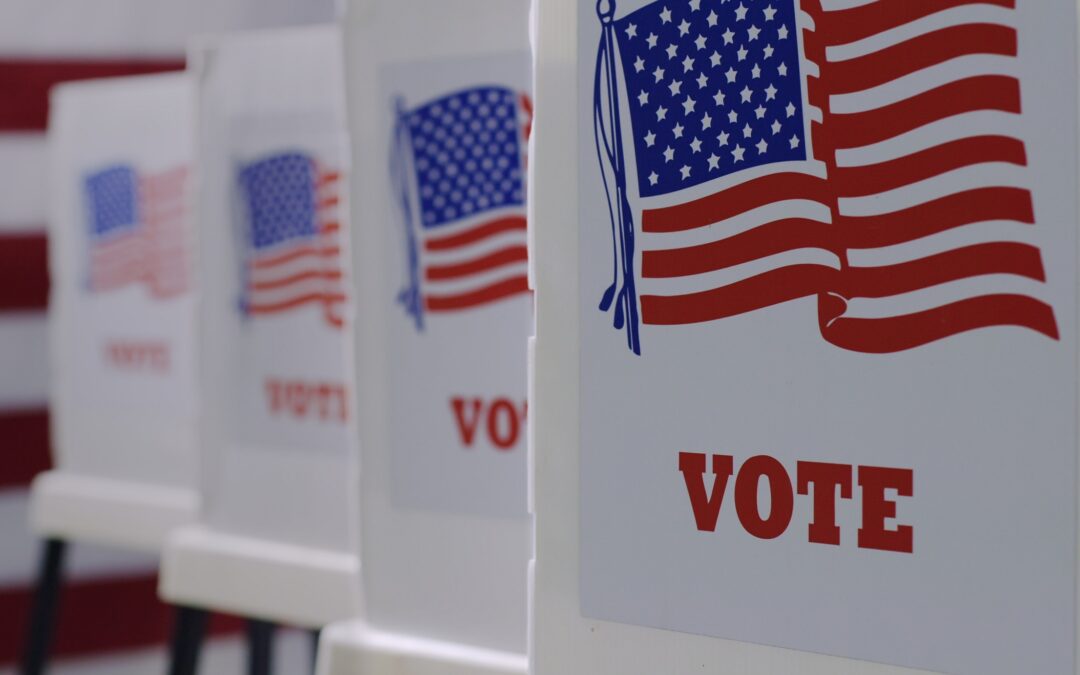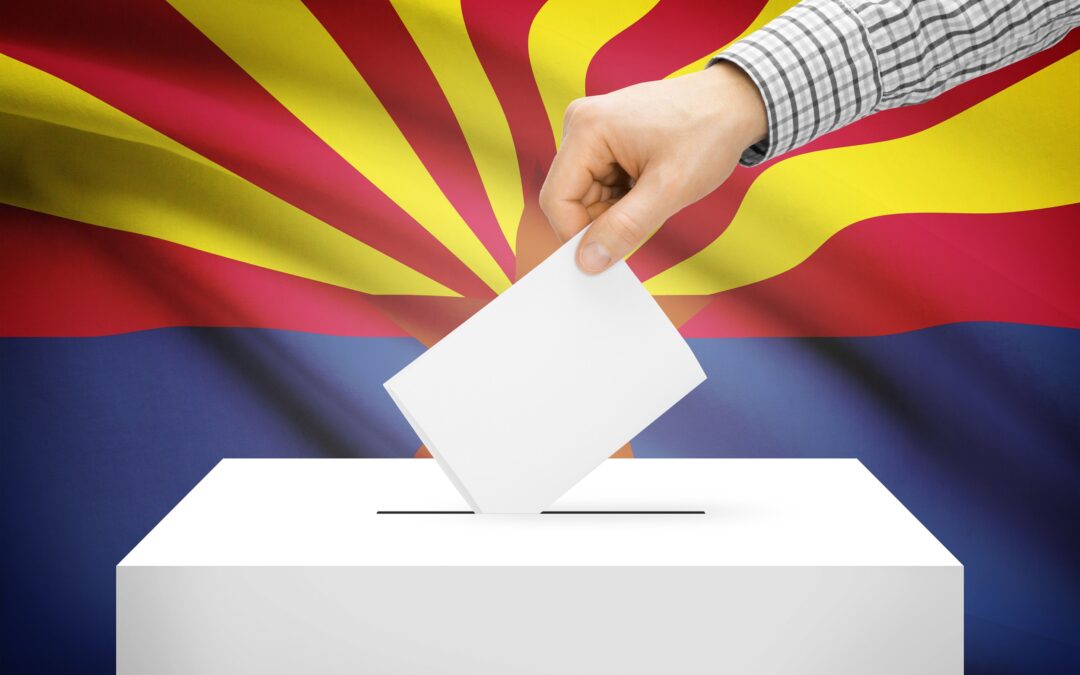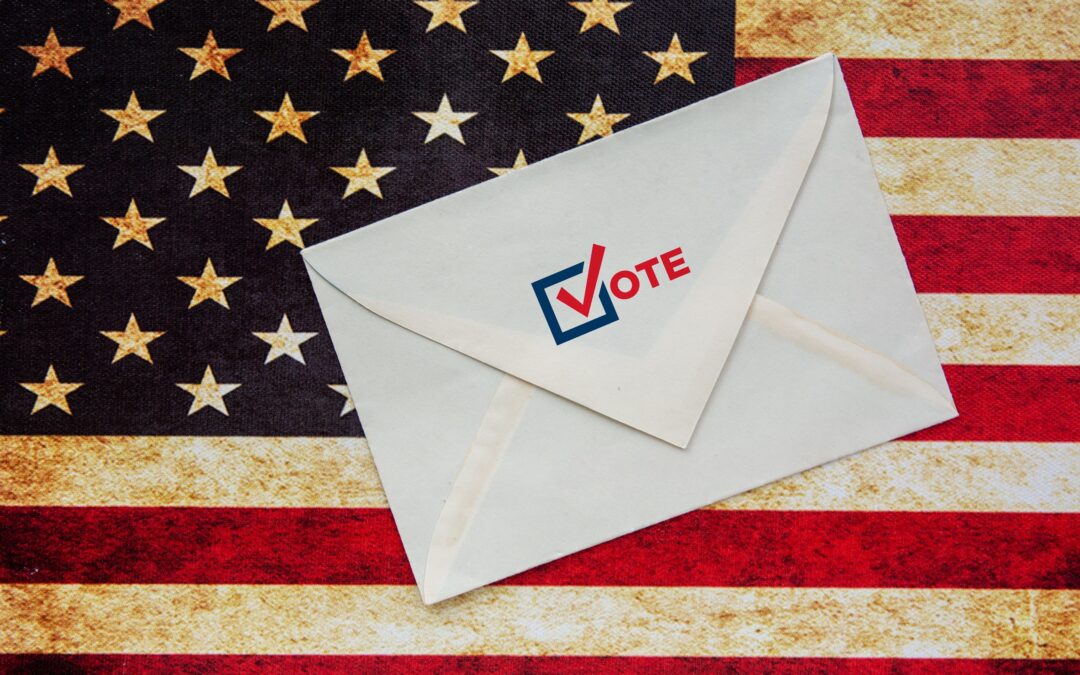
by admin | Jul 25, 2024 | Elections, News and Updates
The surge of border crossings continues. There is an election in just over 3 months. Many voters want to know—can illegals vote?
Obviously, it’s illegal for non-citizens to vote. The real question is whether voters must prove their citizenship prior to voting. This discussion has culminated in the U.S. House passing the SAVE Act earlier this month. But with near unanimous Democrat opposition, a federal proof of citizenship requirement has stalled in Congress.
As both a border and swing state, Arizona is center stage in this national discussion. Even Elon Musk chimed in by sharing an image of our voter registration form that clearly states “proof of citizenship” is not required to vote.
However, Arizona has done far more than any other state to tackle the issue of illegals voting.
In Arizona, if someone registers without proof of citizenship, they are registered as a “Federal Only Voter” and they receive a different ballot with only federal races. This means that: 1) we know exactly who and how many have registered without proof; and 2) they don’t get to influence any of our state or local elections.
In all 49 other states, proof of citizenship is not only not required, but they are all blended onto one list, and they get to vote in every election. So those states have no idea who or how many there even are! Their problem could be far bigger, and they would never know it.
Now with the decision from the U.S. 9th Circuit last week, Arizona will stop even more illegals from voting, thanks to a bill the Arizona Free Enterprise Club authored in 2022.
The truth is, Arizona has worked hard for two decades to stop illegals from voting and until the SAVE Act can be passed, every other state should follow our blueprint to protect their voter rolls and elections from non-citizens voting.
Arizona’s History of Requiring Proof of Citizenship to Vote
The foundation for allowing people to register without proof of citizenship was laid when Congress, in 1993, passed the National Voter Registration Act (NVRA), creating a voter registration form (Federal Form) that must be used by every state. This form does not (and has never) required proof, only a checkmark affirming citizenship. In response to this gaping loophole, Arizona voters, in 2004, approved Proposition 200, becoming the first state in the nation to require proof of citizenship to register to vote.
Immediately after Prop 200 went into effect, a coordinated lawfare campaign was launched to undo Arizona’s proof of citizenship requirement. Following a 2013 U.S. Supreme Court decision determining that the NVRA does require that states “accept and use” the Federal Form for federal races, Arizona created a bifurcated voter registration system. Those who register with the Federal Form without proof of citizenship are registered as ‘Federal Only Voters’ and can only vote in federal elections. Those who use the State Form without proof of citizenship have their applications rejected.
But the assault against Arizona’s proof of citizenship requirement continued, with another lawsuit filed in 2017 challenging the state registration form. This time, the Arizona Secretary of State, rather than going to court to defend the proof of citizenship requirement, quietly entered into a consent decree that bound Arizona to treat the State Form the same as the Federal Form—meaning, register them as ‘Federal Only Voters’ instead of rejecting the form.
The consent decree was a reckless and unnecessary capitulation to the lawfare left, and the result was an explosion of people registering without proof of citizenship. In the 2020 Presidential election, 11,600 Federal Only Voters voted in Arizona, a 582% increase in just two short years. For perspective, Joe Biden won Arizona by 10,457 votes.
A Proof of Citizenship Model for All States
That’s why, in 2022, the Arizona Free Enterprise Club authored and passed HB 2492, comprehensive proof of citizenship legislation that, among other things, nullifies the consent decree and reverts Arizona back to the practice of rejecting all state forms without proof of citizenship.
And that’s where this momentous 9th Circuit decision comes in, being celebrated on social media and by President Trump. Last week, a three-judge panel agreed in Mi Familia Vota v. Fontes that the proof of citizenship requirement in HB 2492 shall be allowed to go into effect, meaning every Arizona county must reject State Forms that do not include proof of citizenship. Failure to do so is a class 6 felony.
This decision will significantly improve the integrity of Arizona’s voter rolls as we head into the 2024 Presidential election. And we are still awaiting a ruling on the remaining provisions of HB 2492, key reforms designed to slam shut the ‘Federal Only’ loophole by stipulating that anyone that signs up as a ‘Federal Only’ voter is prohibited from voting by mail and is ineligible to vote for the President of the United States.
Arizona’s proof of citizenship legislation is the roadmap for stopping non-U.S. citizens from registering and voting in our elections. States don’t have to wait around to see if Washington will ever be able to solve this problem. Our passage of HB 2492 and this new ruling prove that every state has the power to act now. And they must.
Help Protect Freedom in Arizona by Joining Our Grassroots Network
Arizona needs to have a unified voice promoting economic freedom and prosperity, and the Free Enterprise Club is committed to making that happen. But we can’t do it alone. We need YOU!
Join our FREE Grassroots Action List to stay up to date on the latest battles against big government and how YOU can help influence crucial bills at the Arizona State Legislature.

by admin | Jul 17, 2024 | Elections, News and Updates
PHOENIX, ARIZONA – Today, America First Legal, on behalf of the Arizona Free Enterprise Club and Strong Communities Foundation of Arizona, wrote a letter to each of the 16 county recorders in the state, reminding them of their obligation to remove foreign citizens from their voter rolls ahead of the November 2024 General Election.
In 2022, the Arizona Legislature passed – and then-Governor Doug Ducey signed – HB 2492, which bolsters safeguards to the state’s voter registration process to require proof of citizenship ensuring only U.S. citizens are voting in our elections. This legislation cracks down on state voter registration forms submitted without Documentary Proof of Citizenship, requires counties to attempt to ascertain the citizenship status for those who utilize the federal form, and makes proof of citizenship a requirement to vote by mail and for President of the United States. A district judge recently upheld many of the voter list maintenance provisions after challenges from liberal special interests and the Biden-led Justice Department.
HB 2492 was authored by the Arizona Free Enterprise Club.
“With the General Election quickly approaching, Arizonans still have serious concerns about the integrity of their votes – and for good reasons,” said Scot Mussi, President of the Arizona Free Enterprise Club. “It is unconscionable why any county would fail to clean its voter rolls to ensure that only American citizens are able to vote in U.S. elections. We intend to follow through with aggressive litigation should any of these elections’ officials ignore our request for strict compliance with state and federal laws. Arizonans deserve no less.”
In the letter, the coalition presents three arguments for county elections officials to consider.
First, that state and federal law prohibit foreign nationals from voting or registering to vote. No foreign national is authorized to register to vote in or to vote in state or federal elections, regardless of immigration status; and that there are severe immigration-related consequences for any violations. According to the Arizona Secretary of State’s Office, there are 35,273 registered voters in the state as of April 2024, who failed to provide proof of citizenship.
Second, that state and federal law impose requirements for counties to conduct voter list maintenance and remove foreign nationals from voter rolls. Arizona law requires counties to perform monthly list maintenance to confirm the citizenship of federal-only voters, and the Help America Vote Act (HAVA) requires list maintenance to ensure the removal of ineligible voters. The Arizona Attorney General is also required by law to verify proof of citizenship of these voters.
Finally, that county recorders have access to Department of Homeland Security (DHS) to verify citizenship or immigration status of registered voters on voter rolls – and DHS has a legal obligation to provide such information. These tools, enacted by the U.S. Congress, have existed for decades, along with provisions to initiate legal action should DHS fail to comply.
The coalition warns that failure from any county recorders to adhere to their responsibilities under the law may result in legal action.
Read the letter here.
Help Protect Freedom in Arizona by Joining Our Grassroots Network
Arizona needs to have a unified voice promoting economic freedom and prosperity, and the Free Enterprise Club is committed to making that happen. But we can’t do it alone. We need YOU!
Join our FREE Grassroots Action List to stay up to date on the latest battles against big government and how YOU can help influence crucial bills at the Arizona State Legislature.

by admin | Jul 12, 2024 | Elections, News and Updates
This fall, the people of Arizona will have a number of critical decisions to make about the future of our state. But one initiative may be the most important issue facing voters in November.
Earlier this month, the special interests behind a plan to bring California-style jungle primaries and ranked choice voting to Arizona submitted signatures with the Arizona Secretary of State to qualify the so-called “Make Elections Fair Act” for the November General Election. If approved, this proposed constitutional amendment would not only make our elections unfair, but it would radically change how Arizonans select and approve candidates for public office in several alarming ways.
The Measure Grants One Politician Too Much Power
It’s never a good idea to give one politician total power over anything—especially an election—but that’s exactly what the Make Elections (Un)Fair Act would do. The measure grants one politician, in this case the Secretary of State, the power to determine how many candidates will appear on the general election ballot for each race. On top of that, the Secretary of State could even decide how many candidates advance in his or her own race.
Think about what this could mean.
The Secretary of State could go up and down the ballot selecting just two candidates for the general election in one race while selecting five in another race despite the fact that only one candidate can win. But it gets even more confusing. When two seats are open in the general election, meaning that two candidates would be elected, the Secretary of State can select four candidates for one race, but seven in another! This means that the Secretary of State could literally pick and choose all the way up and down the ballot the number of candidates in each race that would most benefit his own political party.
But that’s not even the worst part!
In his own race, if the Secretary of State determined that it would be better for him to go head-to-head with just one opponent, this measure allows him to unilaterally declare that just two candidates will be on the ballot. But if he felt like it would be better to “crowd the field,” he could put five candidates on the ballot to have his opponents fight with each other while he sneaks his way to victory. The Democrats like to talk about “protecting Democracy” (even though we’re a constitutional republic). Does that sound like Democracy to you?
Jungle Primaries Will Result in Races Where Only One Political Party Is on the General Election Ballot
It’s bad enough that some Arizona voters have been disenfranchised in recent elections, but jungle primaries would take this to a whole new level. If this system becomes our reality, we will most certainly see elections in which candidates from only one political party will appear on the general election ballot. That would mean that under this scheme, we could have a November election where your choice for governor only includes Democrats or vice-versa.
This possibility should concern every Republican, Democrat, and anyone in between.
A system like this gives voters no real choice in the general election. It’s completely unfair and is another radical way to leave even more voters in our state disenfranchised.
The Measure Would Force Voters to Navigate Two Completely Different Voting Systems on the Same Ballot
Are you confused enough already? Well, we’re not done. The language of the Make Elections (Un)Fair Act would create a confusing new system for voting that requires the use of a complicated ranking system for some candidates but not for others.
That’s right. Under this flawed system, we would end up with a patchwork ballot where you’re choosing between two candidates in one race and then ranking a set of candidates in your order of preference in the very next contest. This insane voting process would increase tabulation errors, require longer ballots, create longer lines at the polls, and delay election results for months. Clearly, this is not the road Arizona should be heading down.
The reality is that jungle primaries and ranked choice voting are radical election schemes imported from California by out-of-state special interests with a thirst for more influence and control over our state’s political process. Both systems are confusing, unfair, and will disenfranchise voters. And the only ones who stand to gain are the ones with the money to manipulate the system.
As you’re preparing to vote this November, just remember that copying our election system after California is an insane idea. And vote NO on the Make Elections (Un)Fair Act.
Help Protect Freedom in Arizona by Joining Our Grassroots Network
Arizona needs to have a unified voice promoting economic freedom and prosperity, and the Free Enterprise Club is committed to making that happen. But we can’t do it alone. We need YOU!
Join our FREE Grassroots Action List to stay up to date on the latest battles against big government and how YOU can help influence crucial bills at the Arizona State Legislature.

by admin | Jul 10, 2024 | Elections, News and Updates
PHOENIX, ARIZONA – Last week, the special interests behind a plan to bring California-style jungle primaries and ranked choice voting to Arizona submitted signatures with the Arizona Secretary of State to qualify their initiative for the November General Election. If approved by voters, this proposed constitutional amendment would radically change how Arizonans select and approve candidates for public office.
“This fall, Arizonans will have a number of critical decisions to make about the future of our state, but this initiative may be the most important one facing voters,” said Scot Mussi, President of the Arizona Free Enterprise Club.
If passed by voters, The Make Elections (Un)Fair Act, which copies the California voting system, would do the following for future Arizona elections:
- Allows one politician, the Arizona Secretary of State, to decide how many candidates qualify for the general election ballot for every single contest, including his or her own race.
- Would result in some races where candidates from only one political party appear on the general election ballot.
- Would force voters to navigate two completely different voting systems on the same ballot, with some races requiring voters to rank candidates and others that do not.
- Will increase tabulation errors, create longer lines at the polls, and significantly delay election results.
“This initiative is nothing more than a California-style election scheme, which would give unilateral power to one politician to determine the candidates on our ballots. It is not fair, and it is not honest,” said Mussi. “If it is determined that this measure did submit enough valid signatures, we will ensure voters know exactly how undemocratic and unfair these policies will be for future generations.”
Read more about this radical and confusing initiative here.

by admin | Jul 2, 2024 | Corporate Welfare, News and Updates
After months of debate surrounding the controversial reauthorization of the Arizona Commerce Authority (ACA), the tension finally broke on the last day of session when HB2210 was raced through the House and Senate and signed by Governor Hobbs.
Everyone at the capitol was aware of the problems surrounding the Commerce Authority. Our elected officials were briefed on the innumerable deficiencies, questionable activities, and likely illegal behavior of the agency. Yet when it came time to act, the legislature capitulated to the special interest benefactors of the agency, passing a reauthorization with no real reforms. The included changes were so inconsequential that an agency dealing with months of negative press about illegal CEO junkets had nothing but accolades for legislative leadership.
What did the final ACA package look like? In exchange for a five-year reauthorization (one of the longest reauthorizations ever granted to the ACA), the agency agreed to add to their board an attorney practiced in litigating Gift Clause violations, a requirement that their board meetings be videoed and hosted online for public review, a cap of “only” 100 state-paid full-time employees, and some reporting requirements for permitting and approval times by local cities and towns.
So, what started out as a hopeful and robust opportunity for reform quickly disintegrated into window dressing changes. No meaningful legislative oversight of the agency was included. It continues to exempt the ACA from having to use the Attorney General for legal counsel, instead allowing it to be one of the only departments to expend funds hiring silk stocking law firms on the taxpayer’s dime. And it still enjoys its exclusion from the prohibition on competing with private businesses, ironically, considering it claims to exist to promote the thriving of private businesses.
However, the most tragic concession was the jettisoning of the statutory gift clause test, which would have ensured the ACA conducts a constitutional analysis of every grant award and subsidy administered by the agency. The proposed gift clause language was taken straight from the landmark Arizona Supreme Court Schires decision, and given the agency’s track record of violating the Gift Clause, this was the most needed and defensible reform of them all.
Opponents to ACA reform absurdly argued that the “Schires Test” does not apply to the agency, so without its inclusion, it is quite obvious the ACA intends to continue handing out unconstitutional gifts to private business.
Litigation is likely to ensue, but the ACA doesn’t care. It has an unlimited taxpayer-backed war chest to defend these subsidy schemes. It knows it costs a fortune for private actors to sue, and if one of its deals is found to be unconstitutional, it will just modify the next deal, declare it “different,” then dare someone to sue it again. It’s a great scheme if you can figure out how to be part of the 1% that benefits from this racket.
The bottom line is that the absence of substantive reforms to the Arizona Commerce Authority was a missed opportunity for taxpayers. Following a dismal auditor general report and scrutiny by the Attorney General for constitutional violations, there was enough momentum to address many of the problems plaguing the ACA. Sadly, that momentum was squandered, and another government agency was allowed to continue with no oversight or accountability.
Help Protect Freedom in Arizona by Joining Our Grassroots Network
Arizona needs to have a unified voice promoting economic freedom and prosperity, and the Free Enterprise Club is committed to making that happen. But we can’t do it alone. We need YOU!
Join our FREE Grassroots Action List to stay up to date on the latest battles against big government and how YOU can help influence crucial bills at the Arizona State Legislature.

by admin | Jun 26, 2024 | Misc, News and Updates
PHOENIX, ARIZONA – This week, the Arizona Free Enterprise Club, through its attorney, sent a letter to Maricopa County Attorney Rachel Mitchell, requesting that she investigate Governor Katie Hobbs and her so-called Inaugural Fund, and that she prevent Hobbs and her Fund from engaging in illegal electioneering with funds held by the Inaugural Fund.
The communication from the Arizona Free Enterprise Club follows earlier attempts to hold the Governor and her Inaugural Fund accountable. Previously, a member of the State Legislature filed a complaint with the Arizona Attorney General, alleging that any use by the Inaugural Fund monies for the purpose of influencing an election would be a violation of Arizona state statutes. Additionally, House Speaker Ben Toma and Senate President Warren Petersen have warned the governor that state law prevents her from using public resources, including “web pages, personnel, and any other thing of value to influence an election.”
“While everyone is focused on the alleged pay-to-play scheme by the Governor’s Office, Katie Hobbs continues to evade accountability for her illegal advertisement and collection of funds for her political endeavors in the State of Arizona,” said Scot Mussi, President of the Arizona Free Enterprise Club. “As we make clear to County Attorney Mitchell, Hobbs must be stopped or else she – and future governors – will misuse taxpayer resources and ignore laws meant to protect the state’s interests. The Arizona Free Enterprise Club will not allow this blatant disregard for the rule of law to proceed.”
In the letter to County Attorney Mitchell, the Arizona Free Enterprise Club raises two points for the prosecutor’s consideration. First, the Inaugural Fund raises funds that utilize state resources. Before Hobbs was sworn into office, her Inaugural Fund used an official, taxpayer-funded state website to drum up donations to the fund by directing individuals and entities to a staffer on her campaign. Second, Governor Hobbs and members of her team will not commit to foregoing any use of the remaining funds in the Inaugural Fund for the purpose of influencing elections.
As the Club notes, if the governor is not stopped, there will be nothing to prevent her, or any other elected official who lacks scruples, from turning state websites into free advertising for political aims and utilizing other state resources to drum up money that will be spent politically.
Read the letter here.







Recent Comments